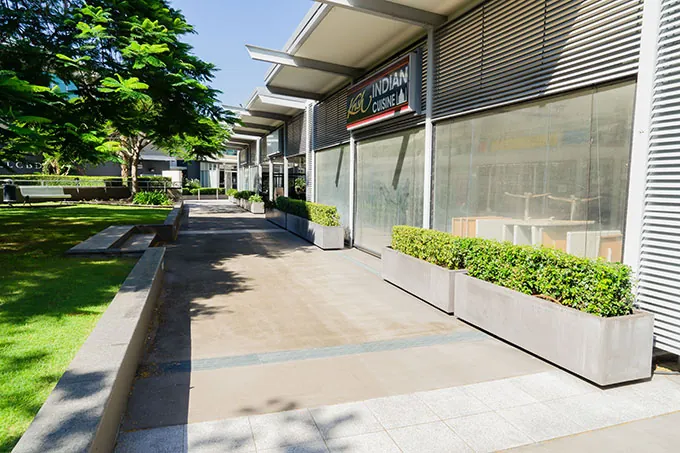Lightweight concrete planters, also called lightweight cement pots, have become a popular choice for gardeners and landscape architects in recent years. They offer a sturdy and stylish option for planting, but it’s important to understand the benefits and considerations that come with using them. In this article, we will be answering some of the most frequently asked questions about concrete pots so you can make an informed decision about whether they’re right for your landscape architecture and design project.
Frequently Asked Questions About Concrete Pots
Are concrete pots good for plants?

Yes, concrete pots can be a good choice for plants. Concrete is a durable and long-lasting material. It can provide a sturdy home for your plants for many years. Concrete is a neutral material that won’t affect the soil. This kind of planter will provide your plants to have a healthy and stable environment to grow in. In reality IOTA’s concrete pots are over 90% fibreglass and really only look like concrete since fibreglass is stronger and better in all aspects.
Does concrete affect soil pH?
No, concrete does not affect the pH level of the soil. This makes it a neutral option for planting and allows your plants to grow in a stable and healthy environment.
Are concrete pots eco-friendly?
It depends on the manufacturing process. They are considered eco-friendly if materials and methods are considered eco-friendly. Hence, it is essential to do your research and look for pots made using sustainable practices so you only support manufacturers that are environmentally responsible.
Are cement pots waterproof?
Concrete pots can be made waterproof with a sealant, but it’s important to keep in mind that they are naturally porous. This means that they will absorb water over time, so it’s essential to ensure they are properly sealed if you plan to use them for plants requiring a lot of moisture.
Why do cement pots crack?
Cement pots can crack for a variety of reasons, including changes in temperature, exposure to the elements, and improper curing. It is important to keep concrete pots in a protected area and make sure they are allowed to cure properly before use.
Is cement poisonous to plants?
No, cement is not poisonous to plants. However, it is important to make sure the concrete pot you choose is made with safe and non-toxic materials, as some additives can be harmful to plants and soil.
Can plants break through concrete?
It’s unlikely that plants will break through concrete, as it is a sturdy and durable material. However, it’s important to make sure your concrete pots have proper drainage holes to prevent water from becoming trapped and potentially damaging the roots of your plants.
How do you take care of concrete pots?
Taking care of concrete pots is relatively simple. To maintain their appearance, it’s important to clean them regularly and keep them sealed to prevent water absorption.
Do concrete pots need drainage holes?
Yes, concrete pots should have drainage holes to prevent water from becoming trapped and damaging the roots of your plants. If the pot you choose does not have drainage holes, you should drill some yourself to ensure proper drainage.
Embracing Concrete Pots: Enhancing Landscapes with Durability and Style
Lightweight concrete planters can be a great choice for gardeners and landscape architects. These pots are the answer if you are looking for a durable and stylish option for planting. However, it’s important to keep in mind the benefits and considerations that come with using concrete pots, such as their need for proper drainage and maintenance to prevent cracking. With the help of these frequently asked questions about concrete pots, you can decide if they are the right choice for your design project.



